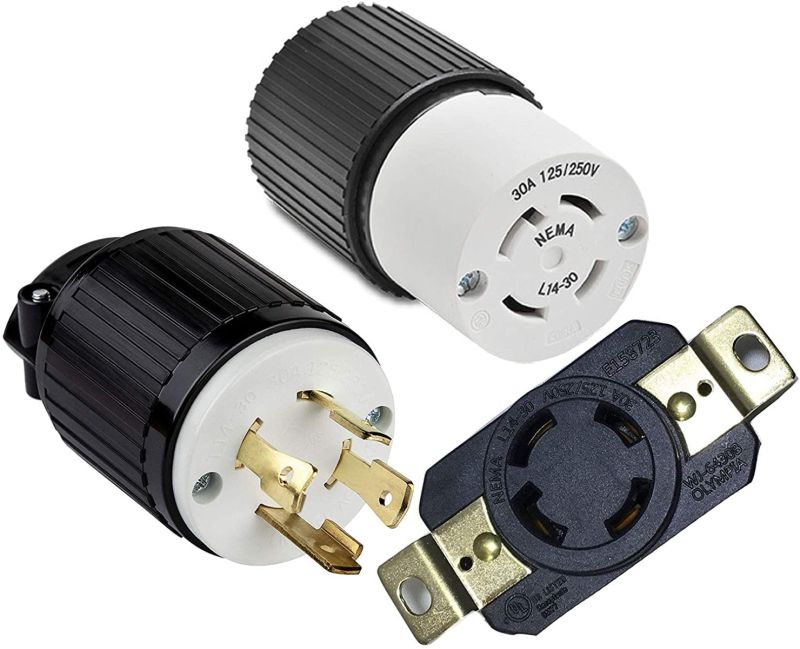This is a sample. Adjust to fit your specific requirements.
Blackout Checklist
Before a Power Outage:
-
Generator Check:
- Ensure the generator is in proper working condition.
- Check fuel levels and have extra fuel stored safely.
- Test run the generator to make sure it starts and generates power.
- Keep generator user manual handy for reference.
-
Extension Cord Preparation:
- Ensure you have marked extension cords for each essential appliance.
- Place the cords in accessible locations for easy setup.
- Check extension cords for any damage or wear.
-
Emergency Supplies:
- Prepare an emergency kit with flashlights, batteries, candles, matches, and a battery-powered radio.
- Keep a supply of non-perishable food, bottled water, and any necessary medications.
-
Communication:
- Fully charge your cell phone and any other communication devices.
- Consider having a backup power bank for your phone.
-
Secure Outdoor Items:
- Secure or bring indoors any outdoor furniture, decorations, or items that could be blown around by wind.
During a Power Outage:
-
Safety First:
- Make sure everyone in your household is safe and aware of the situation.
- Use flashlights or battery-powered lanterns for lighting. Avoid using candles to reduce the risk of fire.
-
Generator Setup:
- Set up the generator outdoors in a well-ventilated area, away from windows, doors, and vents.
- Connect the marked extension cords from the generator to the specific appliances.
- Each appliance should be listed here
-
Appliance Prioritization:
- Prioritize which appliances to power with the generator based on necessity (e.g., refrigerator, freezer, medical equipment).
-
Reduce Power Load:
- Turn off or unplug non-essential electronics and appliances to reduce the overall load on the generator.
-
Monitoring:
- Regularly check fuel levels in the generator and refuel as needed.
- Keep an eye on generator temperature and performance to ensure it's running smoothly.
After a Power Outage:
-
Safety Checks:
- Wait a few minutes after power is restored before reconnecting appliances to the grid to avoid a sudden surge.
-
Generator Shutdown:
- Safely turn off the generator following the manufacturer's instructions.
- Let the generator cool down before storing it.
-
Resetting Appliances:
- Plug in and turn on appliances one by one to avoid overloading the circuits.
-
Restocking Supplies:
- Restock emergency supplies used during the outage.
- Refill generator fuel and store it safely.
-
Evaluate:
- Assess how well your emergency plan worked and make notes for improvements.
Remember that safety is paramount during a power outage. If you are ever unsure about any step in the process, consult your generator's manual or contact a professional for assistance.
Changes to prepare for blackouts.
If you own your house, there are changes you can make to help prepare for blackouts, and make things easier when they happen.
- Create a list of electrical devices that are a priority.
 Where each item plugs in, label the outlet "Grid". Install a second receptacle next to it, labelled "Generator". The wires from this receptacle do not lead to your breaker panel. Instead, they should run outside to where your portable generator will sit. Here, install a weatherproof box with a breaker switch and locking plug. (make sure the plug and wiring exceed the capacity of your generator). When you have a blackout:
Where each item plugs in, label the outlet "Grid". Install a second receptacle next to it, labelled "Generator". The wires from this receptacle do not lead to your breaker panel. Instead, they should run outside to where your portable generator will sit. Here, install a weatherproof box with a breaker switch and locking plug. (make sure the plug and wiring exceed the capacity of your generator). When you have a blackout:- Set up the generator.
- Switch off the outdoor breaker.
- Connect a short cord from the generator to the locking plug.
- Start generator.
- When it's warmed and running smoothly, switch on breaker.
- Proceed back into your house and for each appliance, unplug from the "Grid" receptacle and plug it into the "Generator" outlet.
- For larger appliances that are normally wired direct (eg. well pump, furnace):
- Check your local electrical code to see if they must be wired directly. If not:
- Have an electrician remove the wire. Close to the appliance install a rotating/locking receptacle that is fed from the breaker panel and labelled "Grid". (make sure plugs & receptacles match the required size for the appliance)
- Install a rotating/locking receptacle that feeds from the outdoor generator area and label it "Generator".
- Install a short cord on the appliance with a rotating or locking plug.
- Add emergency lighting. Low voltage LED lights and strips can be added throughout your house. Place a single car battery in your garage, and wire the LED lights to it. These could be all placed on a single switch, or just a few switches to make wiring easier (it's emergency lighting, so it's okay to have a living zone for the living/dining/kitchen, and a bedroom zone for bedrooms/hall/bathrooms). Initially, that battery can be charged via a car charger, powered by the generator. As time and finances improve, a solar panel could be added to keep the battery charged at all times, and later more batteries to increase capacity.
Have you got ideas or suggestions? Create an account and add a comment!

